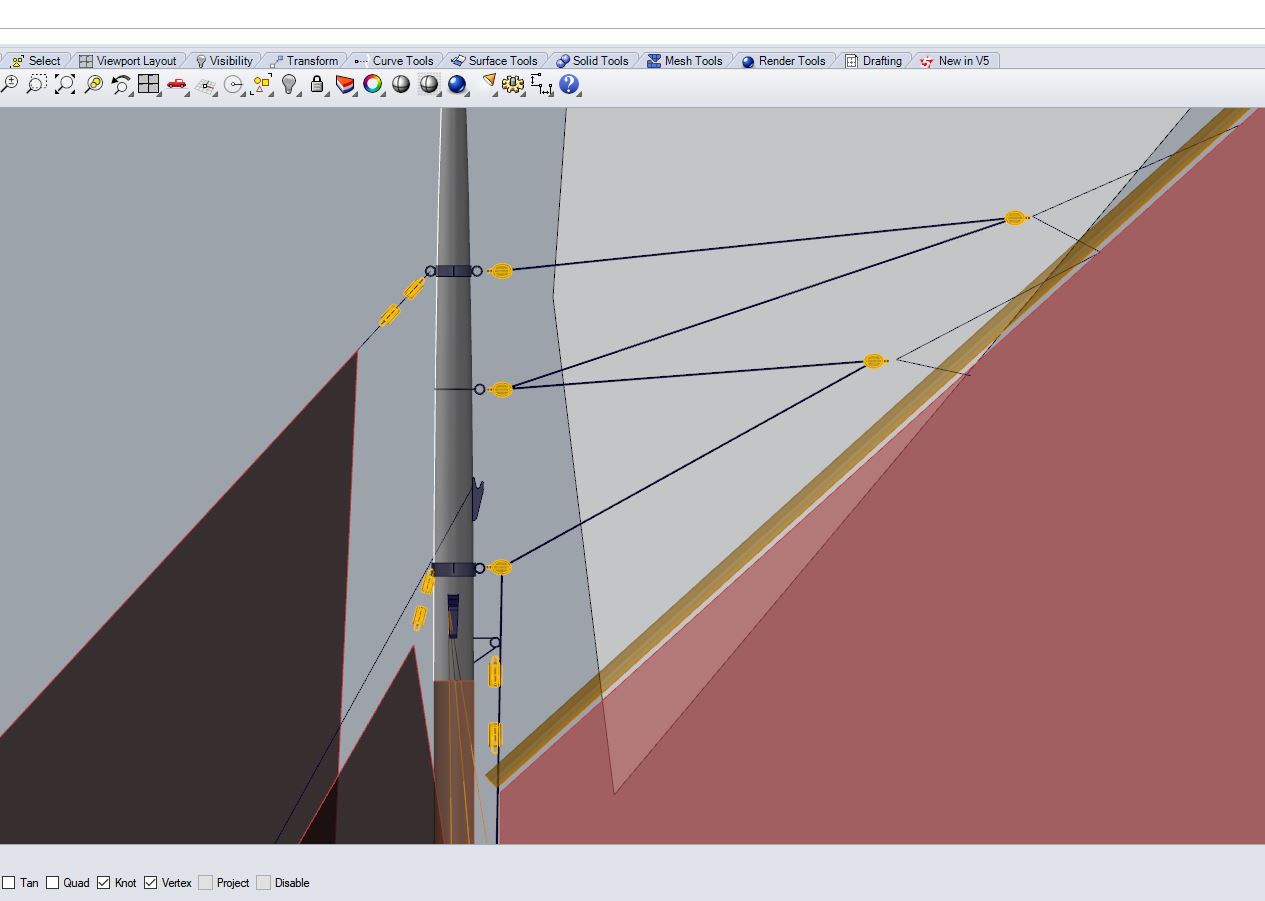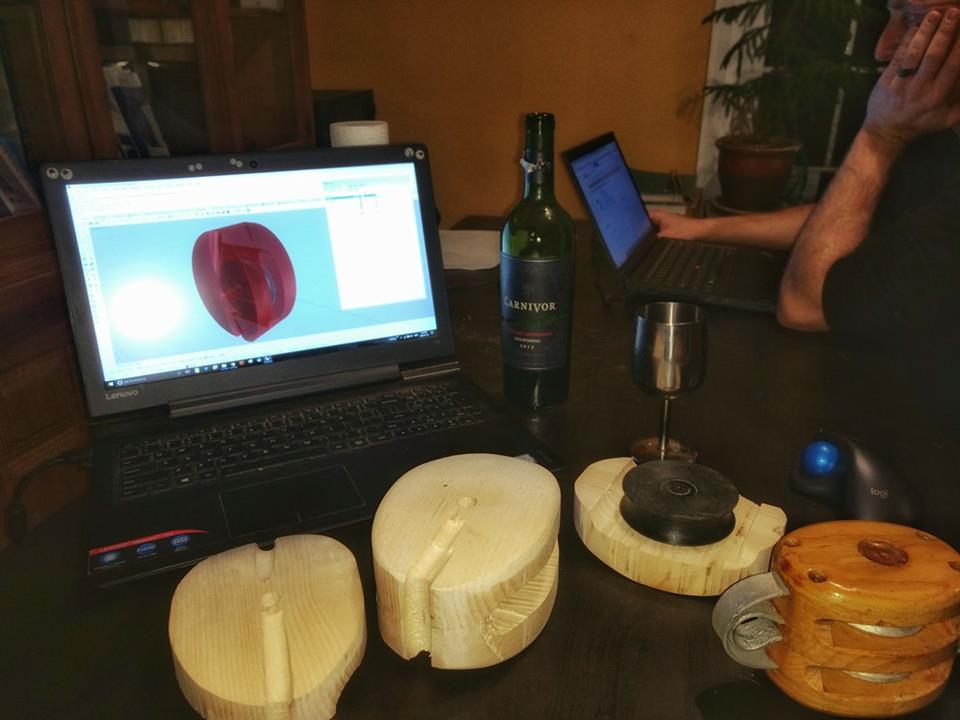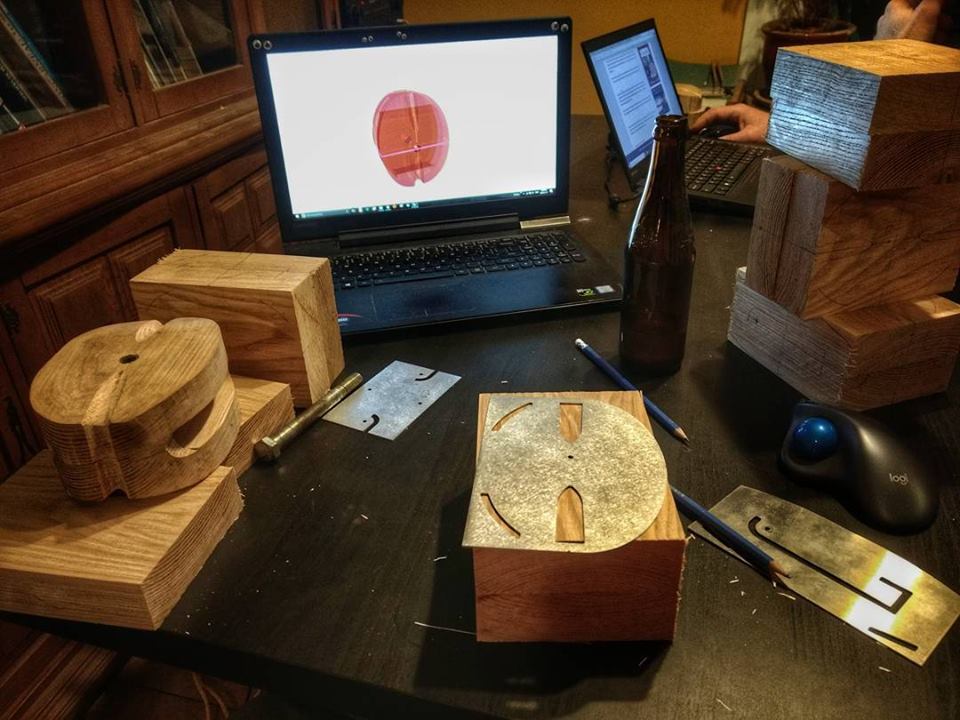After much humming and hawing about building our own blocks we decided to go ahead and do it.
We have the wood and it will make a good winter project.
Whether we purchased or built the blocks we had to start by making a list of what we needed.
I remember as kid how I would look at traditional rigged sailboats and wonder how one could figure out what each rope was for, how they could have so many lines and not get them tangled, how one could assemble those rigs and actually get it right? Ok, that might not be the kind of questioning most 8 year old commonly has but I did…
Traditional sailboats were part of my childhood world and while they captivated me, the rigs also intimidated me. It’s funny how, while gaffers are not so mysterious to me anymore, that feeling of intimidation over what seemed like overwhelming complexity, remains. I still look at sailboats with my childhood wonder; how did they figure it all out?
It amuses me as here I am, having to figure it all out… planning the rig…

What we really need to know for the upcoming project is how many blocks to make, what types, what sizes…. As amazing as the great wide web is for finding answers to questions, we found out there are questions with very little answers on the interwebs about 1910 technology
Books to the rescue, we skimmed through many photos and catalogs to compare boats and cross-over to our own rig.
In pure Murielle fashion, a spreadsheet came together in lieu of detailed block list.

So great! Now that we know how many blocks we need, how big? What shape? Steel strap or rope strop? In modern design we are so used to having access to clear specifications, this almost felt like reinventing the wheel.
Here’s the simple answer to sizing the pulleys: size the pulley to the rope, size the roe to the load. Modern fibers are so strong that this is not applicable to a traditional rig reproduction and we find ourselves having to reinvent the wheel for a 1910 sailboat. Not quite. Ultimately, we need to choose a line size and loading strength not being a limit with modern materials, we need to size based on ergonomics; what feels fine in the hands? We decided to work around 1/2 and 5/8 lines for most of our running rigging. The majority of the blocks will be 6 inch blocks with sheaves cut out of 3.25 inch diameter delrin round bar and all rope stropped.

I made a couple pine models to determine an eye pleasing shape and experiment fabrication methods.
The first two ash blocks I made individually to test the methodology, jig and templates that I will use to fabricate the rest of the block in a line production….. I cant help it, my training in industrial fabrication is creeping on me…
Feeling happy with the first two blocks, we are going ahead and starting with a small run of 6 blocks. Blanks are ready to go.
